Abstract
Ten species of nonhuman primates in West African habitat were analysed for variolavaccinia subgroup haemagglutination-inhibition (HI) and neutralization antibodies. The animals were taken in 27 different sampling zones in parts of the Ivory Coast, Mali, and Upper Volta. Of the 195 tested, 15 (8%) had elevated HI antibodies after nonspecific reactions were reduced with potassium periodate pretreatment. Positive neutralization antibodies were found in 21% (44 of 206). Antibodies were detected in serum from monkeys living near two areas where monkeypox cases in humans had occurred. Four samples were tested for monkeypox specific antibodies using an indirect immunofluorescent test; 3 were positive. Despite the prevalence of poxvirus antibodies in monkeys (and other animals) in West Africa, smallpox eradication has been maintained in the area since 1970; thus, animal reservoirs of poxvirus appear to pose no threat to the worldwide smallpox eradication programme.
Full text
PDF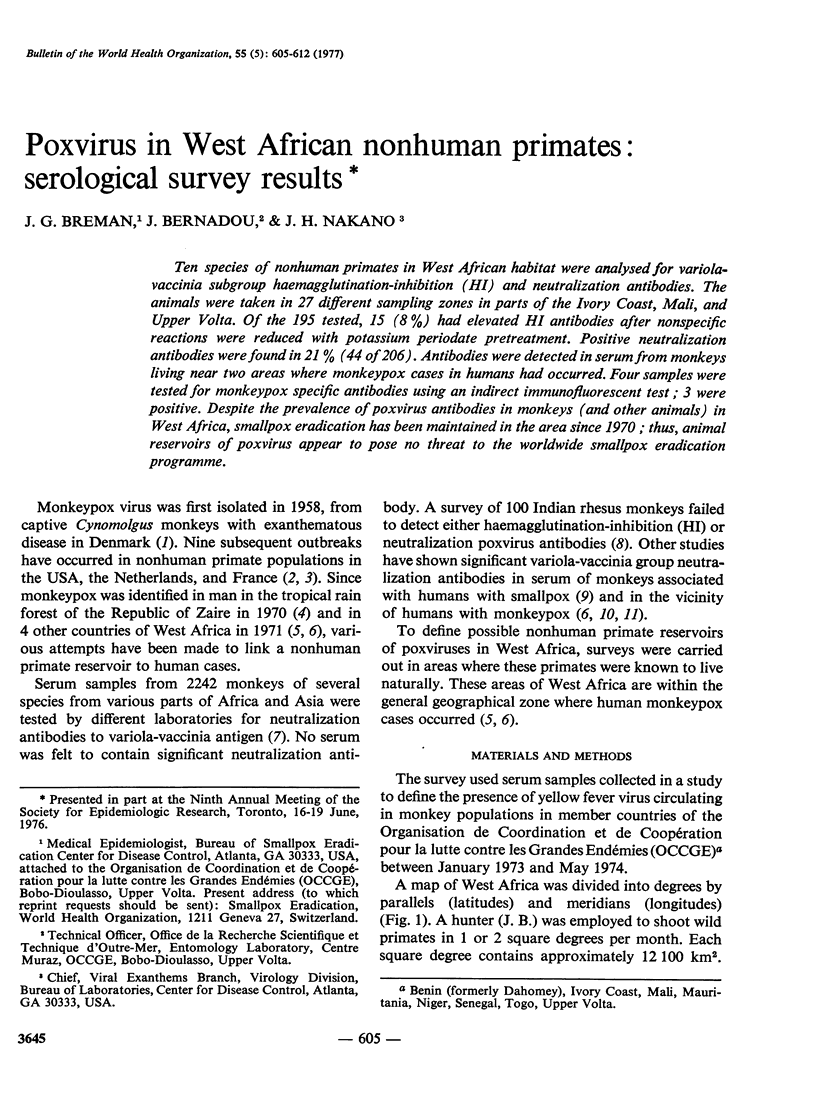
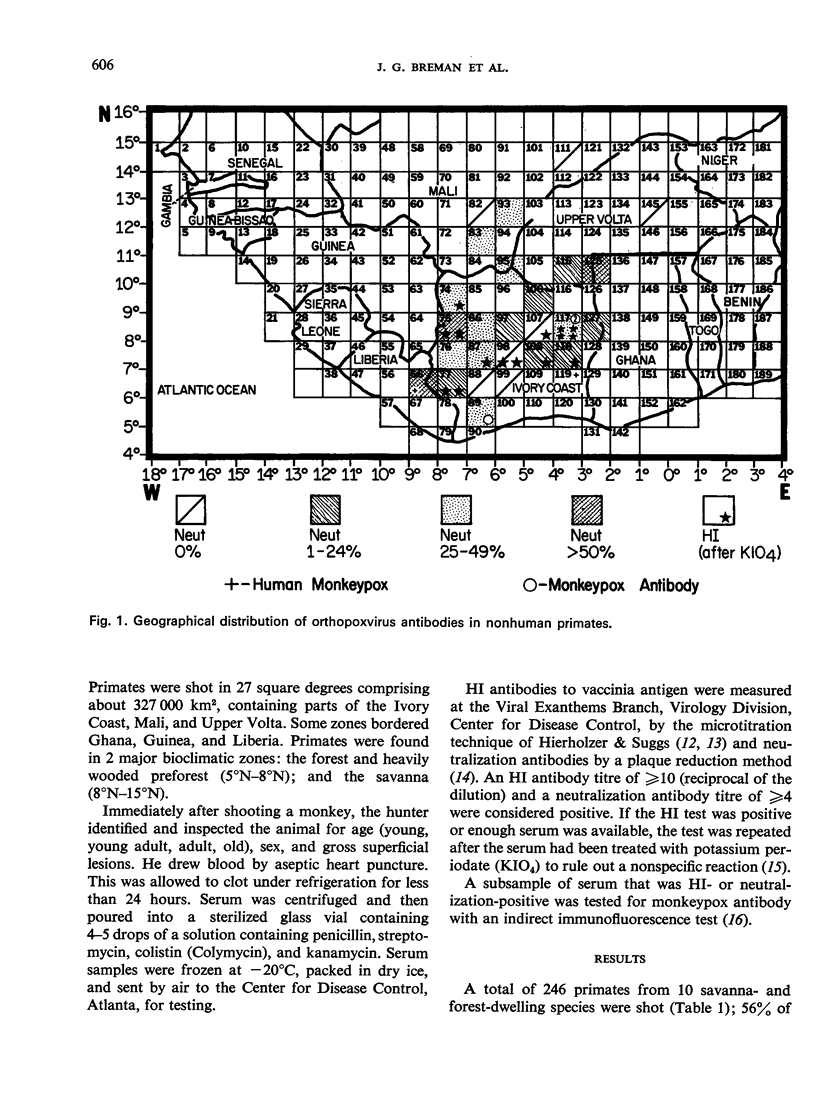
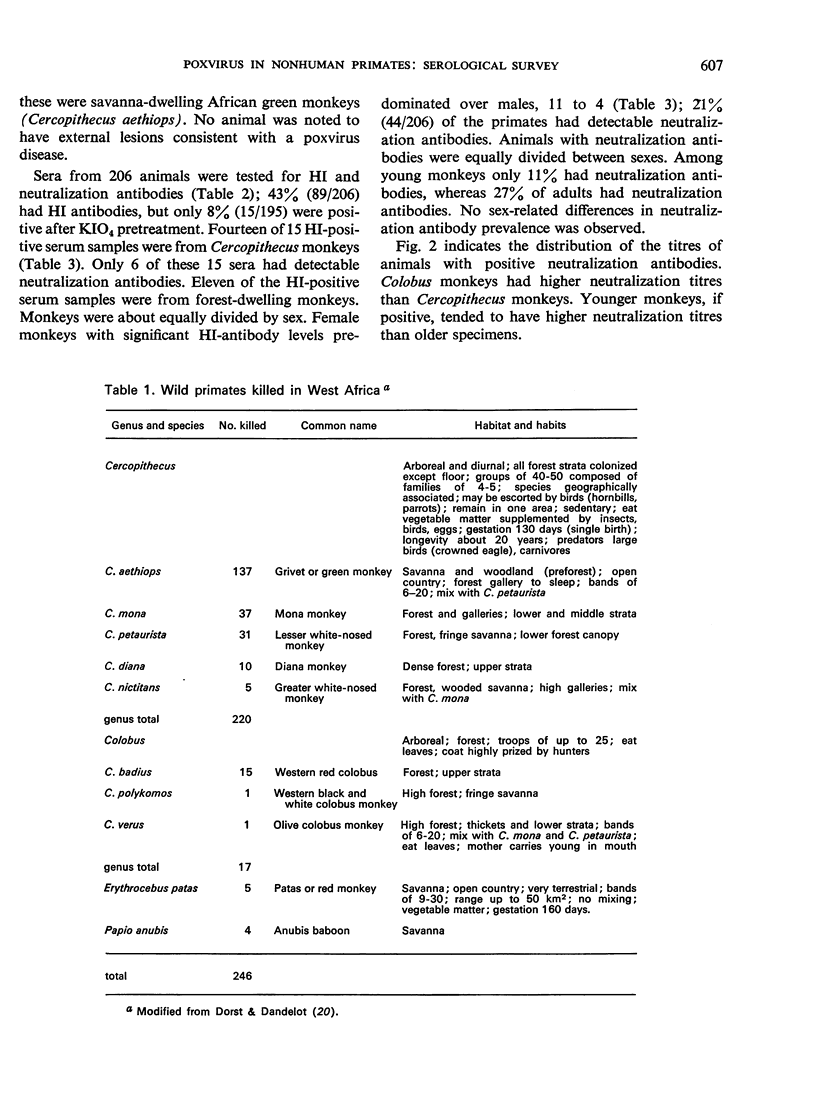

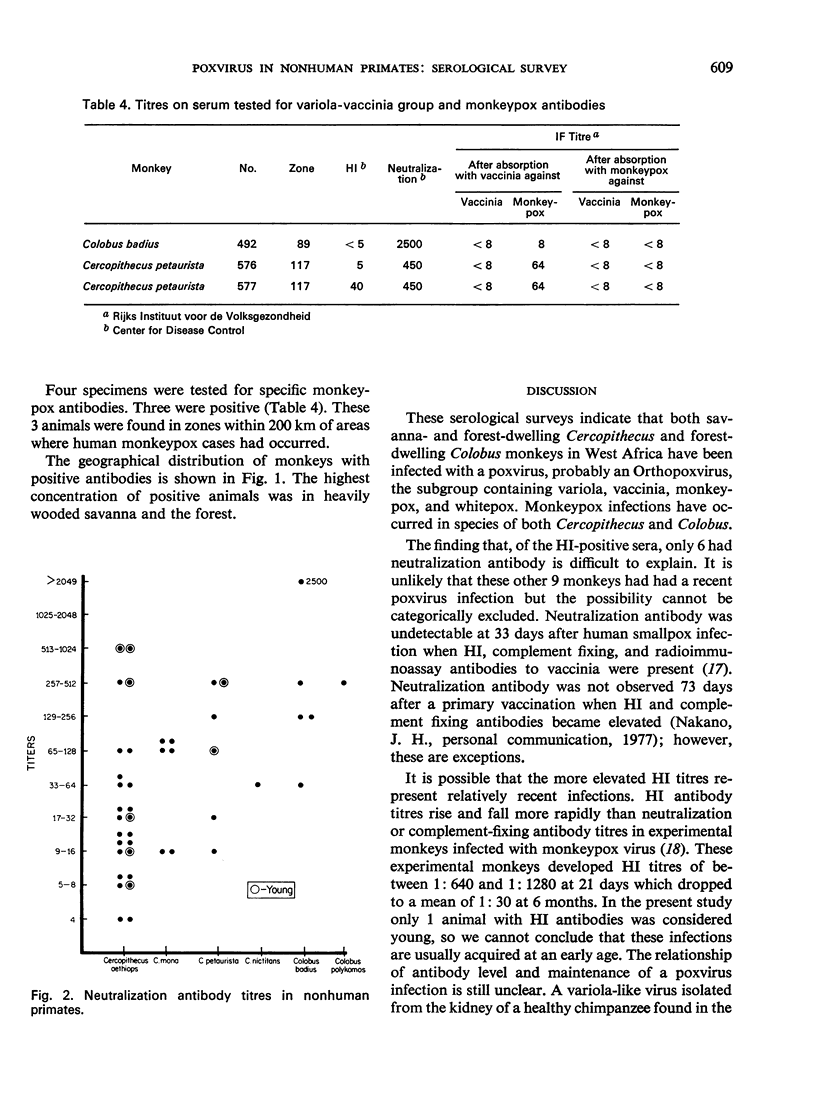
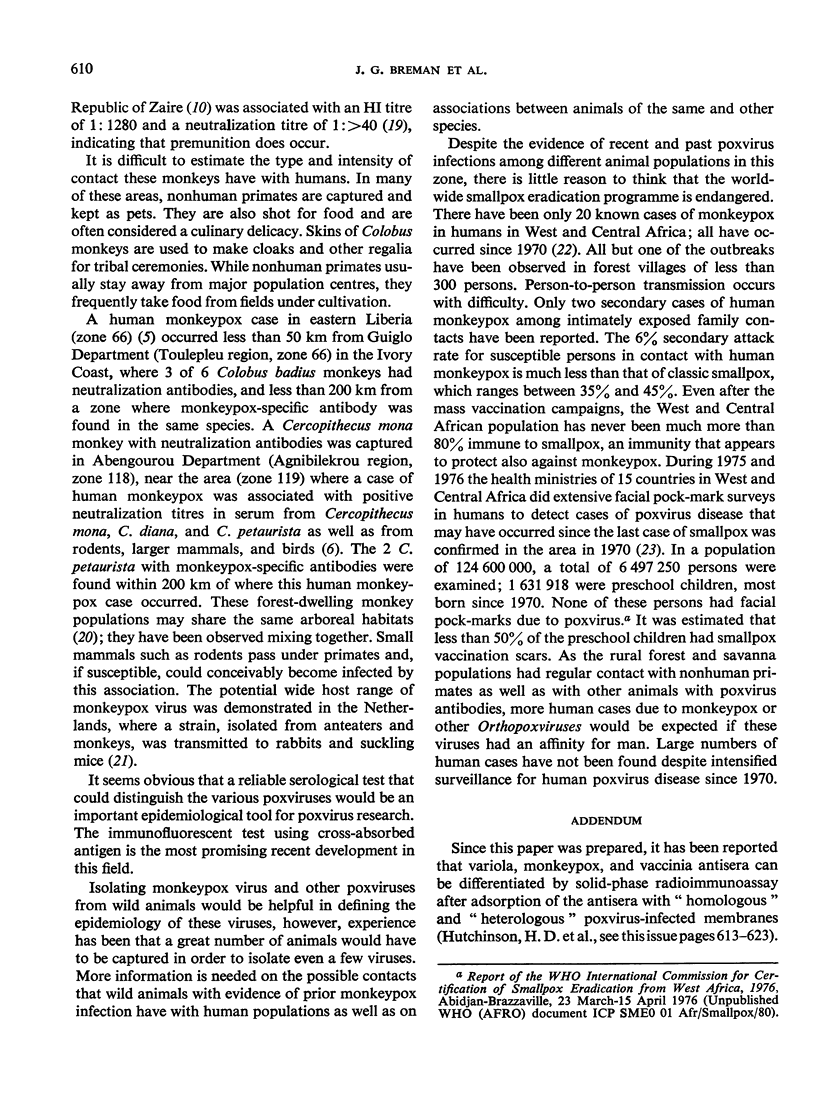
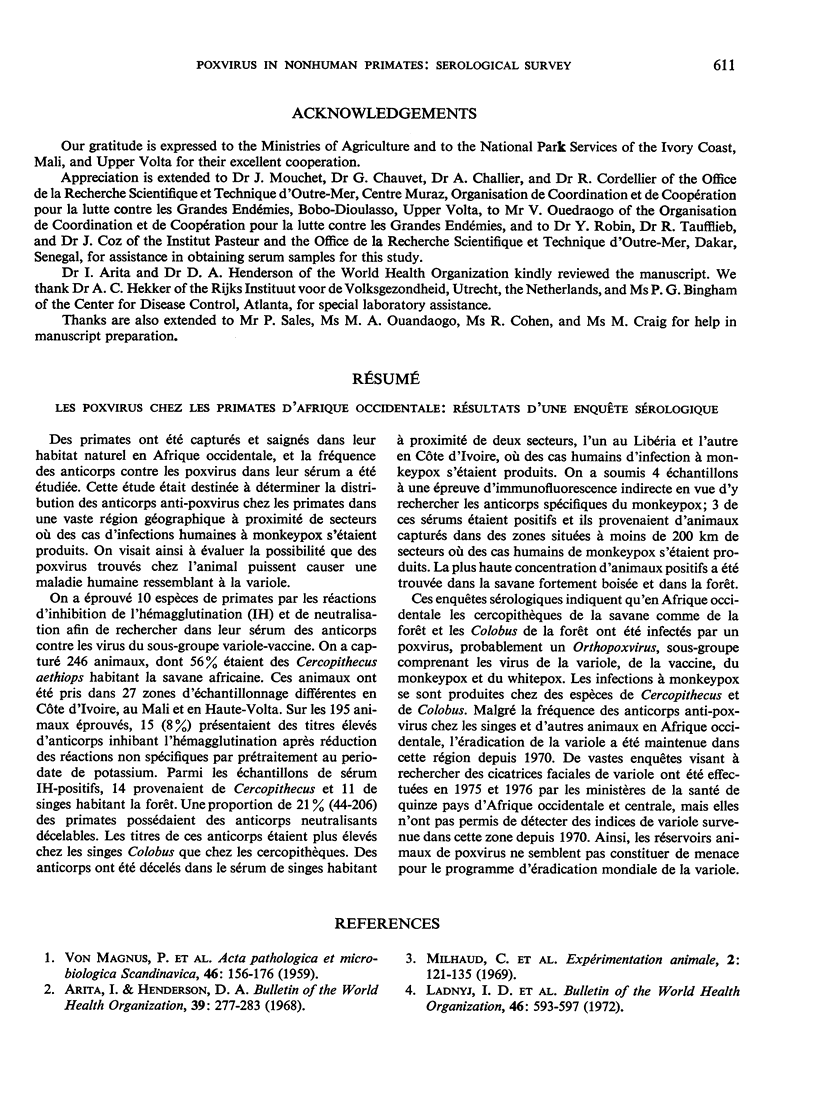
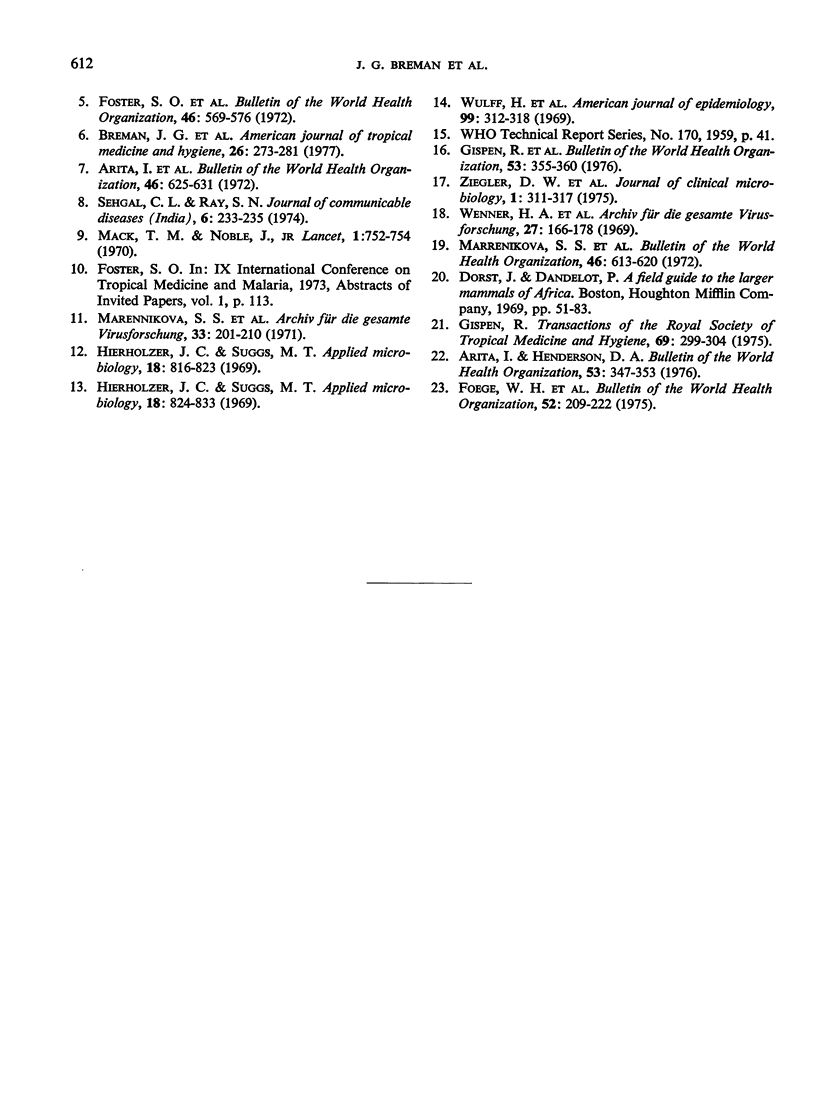
Selected References
These references are in PubMed. This may not be the complete list of references from this article.
- Arita I., Henderson D. A. Monkeypox and whitepox viruses in West and Central Africa. Bull World Health Organ. 1976;53(4):347–353. [PMC free article] [PubMed] [Google Scholar]
- Arita I., Henderson D. A. Smallpox and monkeypox in non-human primates. Bull World Health Organ. 1968;39(2):277–283. [PMC free article] [PubMed] [Google Scholar]
- Foege W. H., Millar J. D., Henderson D. A. Smallpox eradication in West and Central Africa. Bull World Health Organ. 1975;52(2):209–222. [PMC free article] [PubMed] [Google Scholar]
- Hierholzer J. C., Suggs M. T., Hall E. C. Standardized viral hemagglutination and hemagglutination-inhibition tests. II. Description and statistical evaluation. Appl Microbiol. 1969 Nov;18(5):824–833. doi: 10.1128/am.18.5.824-833.1969. [DOI] [PMC free article] [PubMed] [Google Scholar]
- Hierholzer J. C., Suggs M. T. Standardized viral hemagglutination and hemagglutination-inhibition tests. I. Standardization of erythrocyte suspensions. Appl Microbiol. 1969 Nov;18(5):816–823. doi: 10.1128/am.18.5.816-823.1969. [DOI] [PMC free article] [PubMed] [Google Scholar]
- Ladnyj I. D., Ziegler P., Kima E. A human infection caused by monkeypox virus in Basankusu Territory, Democratic Republic of the Congo. Bull World Health Organ. 1972;46(5):593–597. [PMC free article] [PubMed] [Google Scholar]
- Mack T. M., Noble J., Jr Natural transmission of smallpox from man to performing monkeys. An ecological curiosity. Lancet. 1970 Apr 11;1(7650):752–754. doi: 10.1016/s0140-6736(70)90976-1. [DOI] [PubMed] [Google Scholar]
- Marennikova S. S., Gurvich E. B., Shelukhina E. M. Comparison of the properties of five pox virus strains isolated from monkeys. Arch Gesamte Virusforsch. 1971;33(3):201–210. doi: 10.1007/BF01254676. [DOI] [PubMed] [Google Scholar]
- Wenner H. A., Cho C. T., Bolano C. R., Kamitsuka P. S. Studies on the pathogenesis of monkey pox. II. Dose-response and virus dispersion. Arch Gesamte Virusforsch. 1969;27(2):166–178. doi: 10.1007/BF01249641. [DOI] [PubMed] [Google Scholar]


